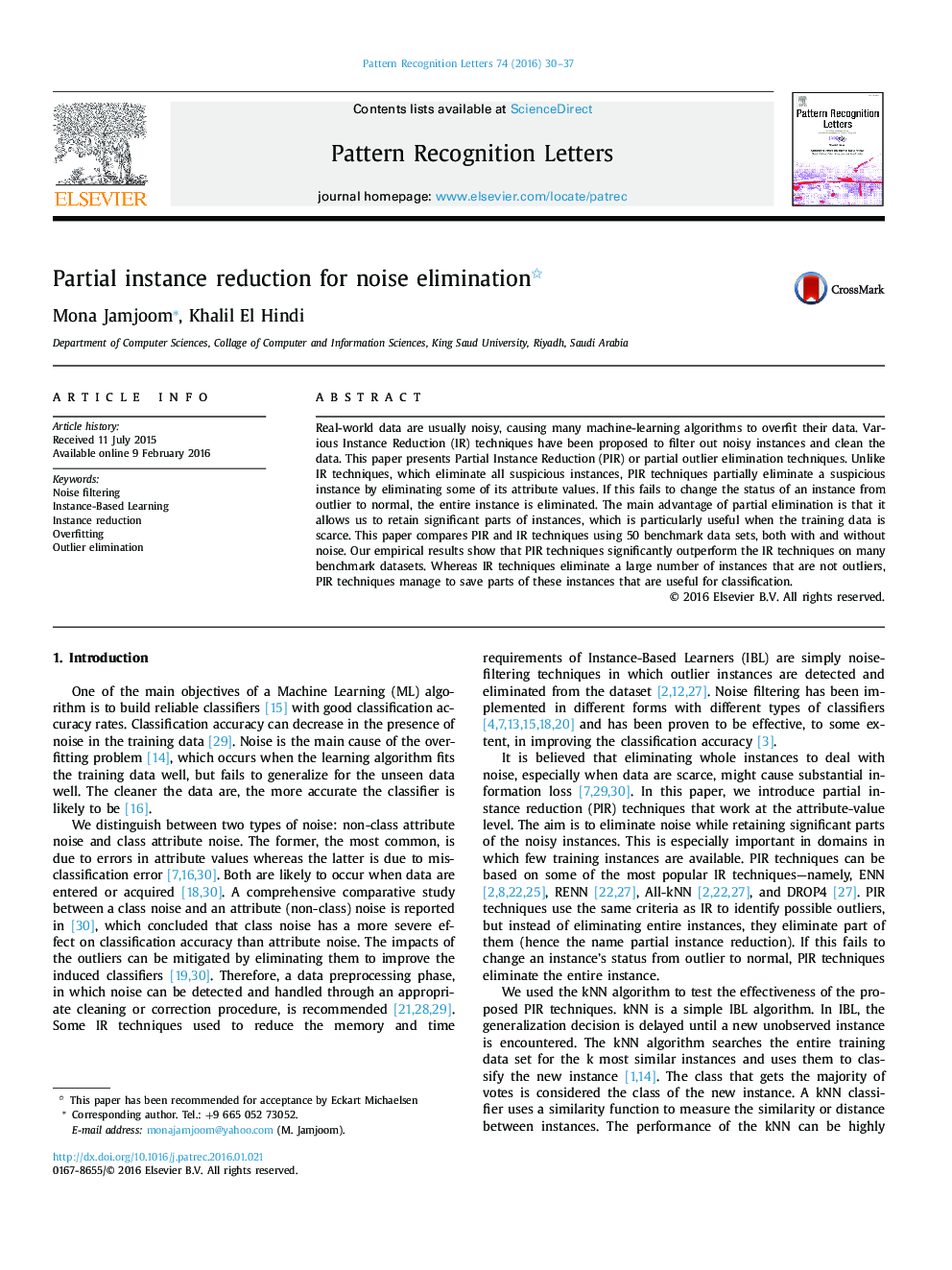| کد مقاله | کد نشریه | سال انتشار | مقاله انگلیسی | نسخه تمام متن |
|---|---|---|---|---|
| 536153 | 870473 | 2016 | 8 صفحه PDF | دانلود رایگان |
• Noisy data decreases the classification accuracy of the induced classifier.
• Accuracy improved by eliminating the noisy instances from the dataset.
• Partial Instance Reduction (PIR) gave better accuracy than complete instance reduction.
• The new PIR methods make use for some valuable information in the noisy instance.
• The new PIR methods will be more useful especially in scarce datasets.
Real-world data are usually noisy, causing many machine-learning algorithms to overfit their data. Various Instance Reduction (IR) techniques have been proposed to filter out noisy instances and clean the data. This paper presents Partial Instance Reduction (PIR) or partial outlier elimination techniques. Unlike IR techniques, which eliminate all suspicious instances, PIR techniques partially eliminate a suspicious instance by eliminating some of its attribute values. If this fails to change the status of an instance from outlier to normal, the entire instance is eliminated. The main advantage of partial elimination is that it allows us to retain significant parts of instances, which is particularly useful when the training data is scarce. This paper compares PIR and IR techniques using 50 benchmark data sets, both with and without noise. Our empirical results show that PIR techniques significantly outperform the IR techniques on many benchmark datasets. Whereas IR techniques eliminate a large number of instances that are not outliers, PIR techniques manage to save parts of these instances that are useful for classification.
Figure optionsDownload high-quality image (88 K)Download as PowerPoint slide
Journal: Pattern Recognition Letters - Volume 74, 15 April 2016, Pages 30–37
